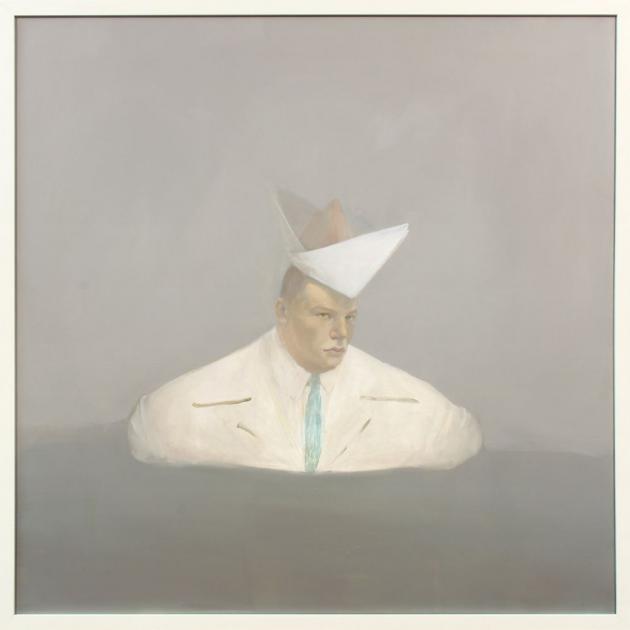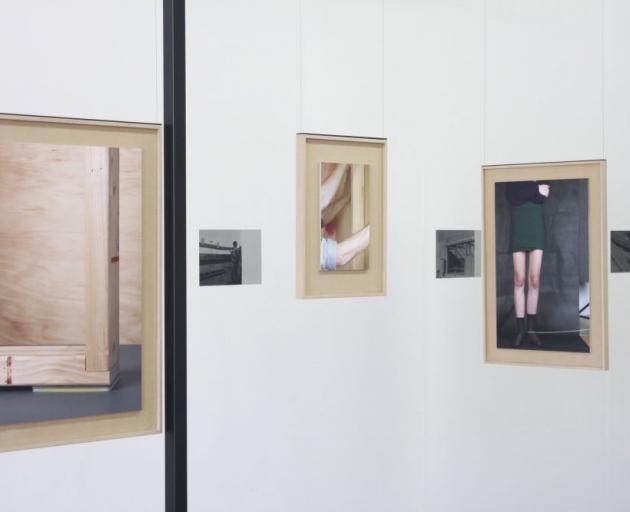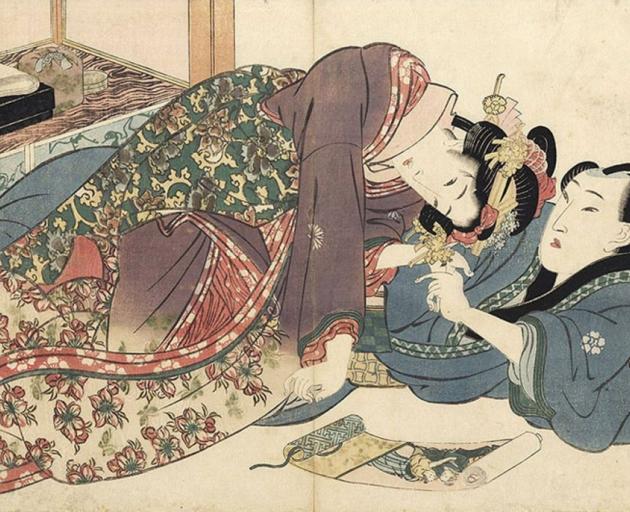
''New Paintings'', Lorene Taurerewa (Milford Galleries Dunedin)
Faces and figures emerge from planes of muted colours in a series of new oil paintings by Lorene Taurerewa.
The New York-based Tokoroa-born artist works in a range of mediums on paper and canvas, including charcoal, ink, graphite and watercolours.
Her drawing-based practice lends a certain illustrative quality to these oil-paint works as carefully placed lines and shading give the figures a certain emotive intensity.
The works are dreamlike; while they are linked aesthetically, logic is easily lost in any attempt to connect each subject.
A gorilla with a beach ball found in one scene, a cowboy in the next, and the figure in The Paper Hat inexplicably, and with a solemn expression, sporting a folded origami hat.
The larger paintings show incipient faces, made from pale lines but all with intense and detailed eyes.
The characters tell stories, but Taurerewa invites the viewer to fill in the blanks and assign roles to the absurd figures she creates.
Each work becomes a scene, scenario or character in the viewer's personal pantomime.
Taurerewa's paintings are peculiarly beautiful and while she has explored surreal subjects and imagery in her art practice before, these new works have a particular sense of bizarre but anodyne elements of the subconscious.

''ornamental labours'', Andrew Kennedy and Blaine Western (Blue Oyster Art Project Space)
Andrew Kennedy and Blaine Western have reformed space in the Blue Oyster with an installation that breaks through the walls.
Kennedy and Western first collaborated last Summer at Artspace, Auckland. Building upon the earlier exhibition, the Blue Oyster offers a second space for the artists to explore the structure and labour behind a constructed site.
The central feature of the exhibition is a series of intersecting black metal beams bolted into the gallery's floor and ceiling.
The beams create a second exhibition space within the original gallery as 17 framed images hang from the structure.
Twenty-two archival images documenting construction and architectural schools are displayed on the gallery walls.
In addition, two video works are in the gallery's AV room and are overdubbed with an instructional voice reading a formwork manual on a technique for making a concrete cast with a wooden frame.
This site-specific display structure presents the viewer with a new perspective on displaying images, and becomes in itself an art object.
It draws the viewer's attention to the authority and parameters of the gallery space as defined by its architectural design.
The structural component of the exhibition and the content of the images and videos on display coalesce to form a thorough exploration of the physical construction of space.

''Shunga: Japanese erotic prints'' (Brett McDowell Gallery)
Brett McDowell is currently showing a fascinating exhibition of erotic Japanese prints.
These works, generally known as Shunga, were created by Japanese Ukiyo-e artists of the 18th and 19th centuries alongside their normal production.
Ukiyo-e was a genre of woodblock print that was famous for depicting emerging urban centres in Japan. More common subjects were landscapes, famous actors and wrestlers, and scenes from history and folk tales.
Shunga, meaning ''spring pictures'', was a shameless form of early-modern erotic art.
It was often characterised by emphasised facial expressions and exaggerated genitals, features that carry through the initial humour and lightheartedness to a contemporary viewer.
The collection at Brett McDowell includes a work by Hokusai, whose designs are some of the bestknown to date, and four by Keisai Eisen, who was known for especially beautiful and complex prints.
A particularly interesting print is from the Tale of Genji by the Utagawa School.
The famous tale of lust and love was a popular subject for Ukiyo-e prints and this example is recognisably of the Utagawa School with deep Western-style perspective.
While an official ban in 1722 did not affect production, in the early 20th century Shunga was officially denounced and became taboo within Japan, so this exhibition is a rare chance to view images that still remain officially prohibited.
-by Samantha McKegg












